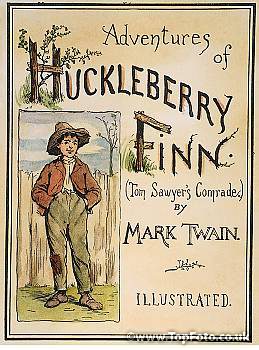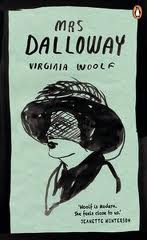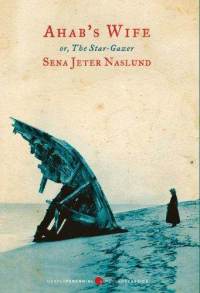Author Photo And Bio
 1. The Grapes of Wrath by John Steinbeck (1939). A powerful portrait of Depression-era America, this gritty social novel follows the Joad family as they flee their farm in the Oklahoma dust bowl for the promised land of California. While limping across a crippled land, Ma and Pa Joad, their pregnant daughter Rose of Sharon, and their recently paroled son Tom sleep in ramshackle Hoovervilles filled with other refugees and encounter hardship, death, and deceit. While vividly capturing the plight of a nation, Steinbeck renders people who have lost everything but their dignity.
1. The Grapes of Wrath by John Steinbeck (1939). A powerful portrait of Depression-era America, this gritty social novel follows the Joad family as they flee their farm in the Oklahoma dust bowl for the promised land of California. While limping across a crippled land, Ma and Pa Joad, their pregnant daughter Rose of Sharon, and their recently paroled son Tom sleep in ramshackle Hoovervilles filled with other refugees and encounter hardship, death, and deceit. While vividly capturing the plight of a nation, Steinbeck renders people who have lost everything but their dignity.
 2. Hamlet by William Shakespeare (1600). The most famous play ever written, Hamlet tells the story of a melancholic prince charged with avenging the murder of his father at the hands of his uncle, who then married his mother and, becoming King of Denmark, robbed Hamlet of the throne. Told the circumstances of this murder and usurpation by his father’s ghost, Hamlet is plunged deep into brilliant and profound reflection on the problems of existence, which meditations delay his revenge at the cost of innocent lives. When he finally acts decisively, Hamlet takes with him every remaining major character in a crescendo of violence unmatched in Shakespearean theater.
2. Hamlet by William Shakespeare (1600). The most famous play ever written, Hamlet tells the story of a melancholic prince charged with avenging the murder of his father at the hands of his uncle, who then married his mother and, becoming King of Denmark, robbed Hamlet of the throne. Told the circumstances of this murder and usurpation by his father’s ghost, Hamlet is plunged deep into brilliant and profound reflection on the problems of existence, which meditations delay his revenge at the cost of innocent lives. When he finally acts decisively, Hamlet takes with him every remaining major character in a crescendo of violence unmatched in Shakespearean theater.
 3. To Kill a Mockingbird by Harper Lee (1960). Tomboy Scout and her brother Jem are the children of the profoundly decent widower Atticus Finch, a small-town Alabama lawyer defending a black man accused of raping a white woman. Although Tom Robinson’s trial is the centerpiece of this Pulitzer Prize–winning novel —raising profound questions of race and conscience —this is, at heart, a tale about the fears and mysteries of growing up, as the children learn about bravery, empathy, and societal expectations through a series of evocative set pieces that conjure the Depression-era South.
3. To Kill a Mockingbird by Harper Lee (1960). Tomboy Scout and her brother Jem are the children of the profoundly decent widower Atticus Finch, a small-town Alabama lawyer defending a black man accused of raping a white woman. Although Tom Robinson’s trial is the centerpiece of this Pulitzer Prize–winning novel —raising profound questions of race and conscience —this is, at heart, a tale about the fears and mysteries of growing up, as the children learn about bravery, empathy, and societal expectations through a series of evocative set pieces that conjure the Depression-era South.
 4. Adventures of Huckleberry Finn by Mark Twain (1884). Hemingway proclaimed, “All modern American literature comes from . . . ‘Huckleberry Finn.’ ” But one can read it simply as a straightforward adventure story in which two comrades of conve nience, the parentally abused rascal Huck and fugitive slave Jim, escape the laws and conventions of society on a raft trip down the Mississippi. Alternatively, it’s a subversive satire in which Twain uses the only superficially naïve Huck to comment bitingly on the evils of racial bigotry, religious hypocrisy, and capitalist greed he observes in a host of other largely unsympathetic characters. Huck’s climactic decision to “light out for the Territory ahead of the rest” rather than submit to the starched standards of “civilization” reflects a uniquely American strain of individualism and nonconformity stretching from Daniel Boone to Easy Rider.
4. Adventures of Huckleberry Finn by Mark Twain (1884). Hemingway proclaimed, “All modern American literature comes from . . . ‘Huckleberry Finn.’ ” But one can read it simply as a straightforward adventure story in which two comrades of conve nience, the parentally abused rascal Huck and fugitive slave Jim, escape the laws and conventions of society on a raft trip down the Mississippi. Alternatively, it’s a subversive satire in which Twain uses the only superficially naïve Huck to comment bitingly on the evils of racial bigotry, religious hypocrisy, and capitalist greed he observes in a host of other largely unsympathetic characters. Huck’s climactic decision to “light out for the Territory ahead of the rest” rather than submit to the starched standards of “civilization” reflects a uniquely American strain of individualism and nonconformity stretching from Daniel Boone to Easy Rider.
 5. All Quiet on the Western Front by Erich Maria Remarque (1929). Remarque drew on his military experience to craft this seminal antiwar novel. At the outset of World War I, Paul Baumer and his fellow Germans are gung-ho. As the senseless bloodbath continues, hope turns to disillusionment, and death comes to seem a welcome reprieve in this gritty and poignant tale.
5. All Quiet on the Western Front by Erich Maria Remarque (1929). Remarque drew on his military experience to craft this seminal antiwar novel. At the outset of World War I, Paul Baumer and his fellow Germans are gung-ho. As the senseless bloodbath continues, hope turns to disillusionment, and death comes to seem a welcome reprieve in this gritty and poignant tale.
 6. A Farewell to Arms by Ernest Hemingway (1929). Based on Hemingway’s experiences during World War I, this romantic tragedy recounts the story of Frederic Henry, an American volunteer in the Italian ambulance corps who meets and eventually falls in love with a maternal yet alluring English nurse, Catherine Barkley. Eventually, they abandon the war for neutral Switzerland —Frederic and Catherine have made “a separate peace”—though other dangers await in this story of commitment, individual choice, and the narrow line separating courage and hypocrisy.
6. A Farewell to Arms by Ernest Hemingway (1929). Based on Hemingway’s experiences during World War I, this romantic tragedy recounts the story of Frederic Henry, an American volunteer in the Italian ambulance corps who meets and eventually falls in love with a maternal yet alluring English nurse, Catherine Barkley. Eventually, they abandon the war for neutral Switzerland —Frederic and Catherine have made “a separate peace”—though other dangers await in this story of commitment, individual choice, and the narrow line separating courage and hypocrisy.
 7. Mrs. Dalloway by Virginia Woolf (1925). This masterpiece of concision and interior monologue recounts events in the life of Clarissa Dalloway, a delicate, upper-class London wife and mother, as she prepares for a party at her home on a single day in June 1923. In a parallel subsidiary plot, a shell-shocked World War I veteran Clarissa encounters spirals into suicide rather than submit to soul-stealing experimental psycho therapy. The novel explores questions of time, memory, love, class, and life choices through Woolf’s intricate melding of points of view and powerful use of flashback.
7. Mrs. Dalloway by Virginia Woolf (1925). This masterpiece of concision and interior monologue recounts events in the life of Clarissa Dalloway, a delicate, upper-class London wife and mother, as she prepares for a party at her home on a single day in June 1923. In a parallel subsidiary plot, a shell-shocked World War I veteran Clarissa encounters spirals into suicide rather than submit to soul-stealing experimental psycho therapy. The novel explores questions of time, memory, love, class, and life choices through Woolf’s intricate melding of points of view and powerful use of flashback.
 8. Ahab’s Wife by Sena Jeter Naslund (1999). “Captain Ahab was neither my first husband nor my last” reads the opening line of this novel, which imagines the life of the woman married to the obsessive captain from Moby-Dick. And what a life it was —running away from home, posing as a boy to get aboard a whaling ship, tragedy at sea, cannibalism, and then domestic life in New Bedford, Massachusetts. Naslund captures all in rich detail as she deepens her portrait of this lively, intellectually and spiritually curious heroine.
8. Ahab’s Wife by Sena Jeter Naslund (1999). “Captain Ahab was neither my first husband nor my last” reads the opening line of this novel, which imagines the life of the woman married to the obsessive captain from Moby-Dick. And what a life it was —running away from home, posing as a boy to get aboard a whaling ship, tragedy at sea, cannibalism, and then domestic life in New Bedford, Massachusetts. Naslund captures all in rich detail as she deepens her portrait of this lively, intellectually and spiritually curious heroine.
 9. A Portrait of the Artist as a Young Man by James Joyce (1916). In this semiautobiographical novel, hero Stephen Dedalus rejects the world of his youth —Ireland in its provincialism, nationalism, Catholicism, and sexual guilt —for art. From its stream of consciousness technique to its descriptions of expatriate life in Paris, Portrait inspired nearly all the touchstones of twentieth-century modernism, the most important of which is the artist as a misunderstood god.
9. A Portrait of the Artist as a Young Man by James Joyce (1916). In this semiautobiographical novel, hero Stephen Dedalus rejects the world of his youth —Ireland in its provincialism, nationalism, Catholicism, and sexual guilt —for art. From its stream of consciousness technique to its descriptions of expatriate life in Paris, Portrait inspired nearly all the touchstones of twentieth-century modernism, the most important of which is the artist as a misunderstood god.
 10. The Great Gatsby by F. Scott Fitzgerald (1925). Perhaps the most searching fable of the American Dream ever written, this glittering novel of the Jazz Age paints an unforgettable portrait of its day — the flappers, the bootleg gin, the careless, giddy wealth. Self-made millionaire Jay Gatsby, determined to win back the heart of the girl he loved and lost, emerges as an emblem for romantic yearning, and the novel’s narrator, Nick Carroway, brilliantly illuminates the post–World War I end to American innocence.
10. The Great Gatsby by F. Scott Fitzgerald (1925). Perhaps the most searching fable of the American Dream ever written, this glittering novel of the Jazz Age paints an unforgettable portrait of its day — the flappers, the bootleg gin, the careless, giddy wealth. Self-made millionaire Jay Gatsby, determined to win back the heart of the girl he loved and lost, emerges as an emblem for romantic yearning, and the novel’s narrator, Nick Carroway, brilliantly illuminates the post–World War I end to American innocence.